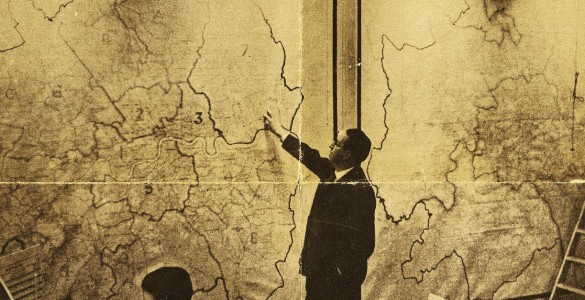Posted on November 19, 2015, 9:07 pm By John Proctor

From midnight on 5th/6th June a convoy started to make its way towards Boulogne from the English coast. The convoy was covered by aircraft from Bomber Command’s 101 Squadron, operating ABC and 100 Group’s 214 Squadron was flying a RCM ‘Mandrel screen’ operation with the intention of confusing the German’s coastal radar system
German night-fighters were sent up to intercept the RCM aircraft and heavy artillery along the French coast was alerted to the convoy’s presence and they opened fire on it. Searchlights were directed towards the approaching ships and E-Boats were despatched to intercept the convoy which was maintaining course at around 7 knots. Thus the ships of Operation ‘Glimmer’ progressed towards Boulogne for about three hours under constant scrutiny from a British G-H station.
The conclusion drawn by the G-H Station was that the pilots of RAF Bomber Command’s 218 (Gold Coast) Squadron had flown a completely effective simulation of a seaborne convoy. Operation ‘Glimmer’ had successfully caught the attention of, and confused the German defences into thinking that a component part of the Allied invasion fleet was heading towards Boulogne.
The operation was flown by eight Short Stirling IIIs from 218 Squadron, taking off from RAF Woolfox Lodge just before midnight in two waves of five (t/o 23.39 on) and three (second wave t/o fifty minutes after the first). Aircraft were equipped with G-H and Gee boxes and were fitted with two flare chutes and manned by crews of thirteen, made up of two pilots, three navigators, a wireless operator, flight engineer, two air-gunners, two window-droppers and two replacement window-droppers.
Following practice exercises in the run-up to ‘D-Day’ the Stirlings were required to fly precise reciprocating ‘orbits’ along their required track to advance at a rate of 7 knots, dropping bundles of window at carefully timed twelve minute intervals to generate advancing radar ‘targets’, simulating a flotilla of ships. Navigation and speed were required to be spot-on, as was the timing of window dropping so that German radar plotted regular progress of the windowed blips.
214 Squadron’s ‘Mandrel’ equipped Boeing B17s presented their ‘Mandrel screen’ over the English channel (off the Hampshire/ Dorset coast) and 101 Squadron were patrolling to the north-west of Dieppe towards Abbeville.
Slightly further to the south-west 617 Squadron were undertaking a similar timed windowing operation ‘Taxable’, simulating another sizeable convoy heading towards Le Havre. Despite also being very accurately flown, 617’s convoy apparently drew little enemy attention.
Another example of RAF Bomber Command’s contribution to the ‘Second Front’.
Operation ‘Glimmer’ in more detail at:- http://www.hellzapoppin.demon.co.uk/glimmer.htm
No comments yet Categories: John Proctors Blog
